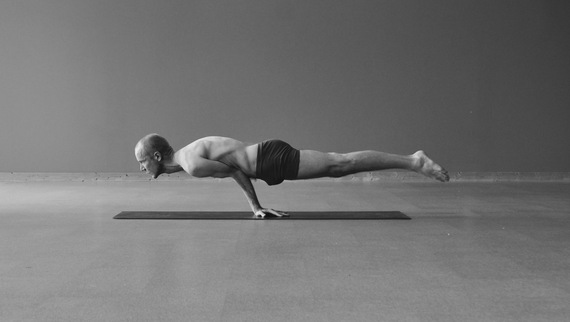Yoga has become a beautifully modern practice rich in historical fallacy. While it pulls teachings from modern sciences such as anatomy, it is mixed with mysticism and at points is spiritually charged. You'll commonly hear yoga teachers say "this is an ancient practice" or "all of these postures are thousands of years old." Well, this isn't really the case. Not that there isn't some seed of truth in these claims, but along they way they've been glossed over for the sake and weight of tradition.
The Ghosh lineage of yoga is still known best for one particular heir, Bikram Choudhury. Bikram motivated the Western masses to practice his therapeutic and vigorous series of yoga postures and breathing exercises. And while Bikram Yoga has always been meant for beginning practitioners, occasionally a select few were allowed into the advanced world of the 84 Asanas.
84 is a sacred number in many spiritual traditions, representing a harmonious relationship between the individual and the universe. This harmonious relationship is also fundamental to the practice of yoga, so it is no wonder that yogis incorporate the number into their systems. The idea of 84 asanas is an ancient one, though most traditions actually teach more than that.
In the Ghosh lineage, 84 is referenced many times. We find it first in the work of Buddha Bose from 1938. Then in Gouri Shankar Mukerji's text from 1963. Bikram's advanced series is often referred to as "the 84".
If we broaden our scope, we find references to 84 that go back much further. The Goraksasataka, a text from around the 13th century, states that there are as many Asanas as there are species of creatures, that Shiva has enumerated 84 asanas, and that out of all the asanas, only two are particularly distinguished. (GS 5-7) It goes on to describe Siddhasana and Kamalasana (another name for Padmasana or Lotus posture).
The Shiva Samhita, from about the 15th century, says that "there are eighty-four asanas of various kinds which I have taught. Out of these I shall take four and describe them." (SS 3:96)
The Hatha Pradipika, popularly known as the Hatha Yoga Pradipika, from about the 15th century, agrees with the Shiva Samhita. It says "Eighty-four asanas were taught by Shiva. Out of those I shall now describe the four important ones." (HP 1:33)
The Gheranda Samhita, from about the 17th century, says, "All together there are as many asanas as there are species of living beings. Shiva has taught 8,400,000. Of these, eighty-four are preeminent, of which thirty-two are useful in the world of mortals." (GHS 2:1-2) The text goes on to describe those 32 asanas, by far the most in any old yoga text.
As history has progressed and the practices of yoga have gotten more physical, the number of postures that are instructed and practiced has increased. Today there are hundreds of asanas practiced in any given tradition, including Ghosh. But the symbolic power of the number 84 stays the same. This is a perfect example of the desire of modern yogis to attempt to merge tradition with the exploration of health and freedom.
